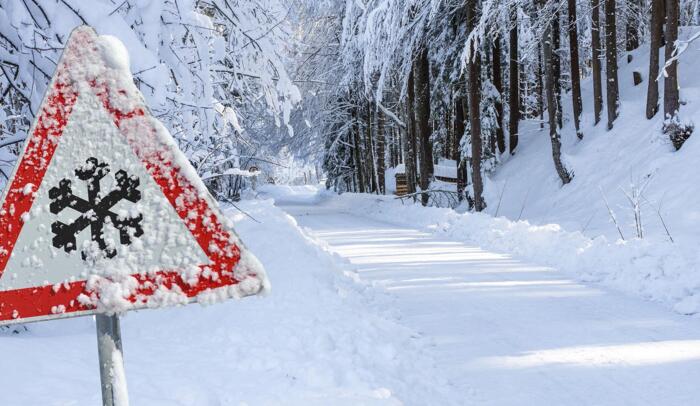Which de-icing agent to use?
The choice of a de-icing agent is largely determined by the following criteria:

In our rather moist winter climate in which frost and thaw regularly alternate, in combination with the dense traffic, de-icing salt (NaCl) is the best de-icing agent
Criteria
Effectiveness: the effectiveness of a de-icing agent can be stated in melting ratio: this is the quantity of ice (in kg) that can be melted by 1 kg of de-icing agent. For sodium chloride (= salt) the melting ratio is as follows: 12 kg of ice per kg of pure NaCl with a temperature of -5°C. The lower the temperature, the more salt is required to have the same quantity of ice melted.
Usability: the objective of a de-icing agent is to lower the freezing temperature of the water. Therefore the freezing point lowering effect of a de-icing agent is studied. This effect is expressed in a temperature decrease. Besides, one needs to know at which temperature (below zero) the de-icing agent stops being effective.
Availability: a de-icing agent should obviously be largely and immediately available. Large stock and fast supply are very important for de-icing. A proper collaboration with the producer and/or distributor is thus essential. Considering the fact that winter weather is unpredictable, the de-icing agent must be stored in large quantities and for a couple of years.
Safety: a de-icing agent should be used without severe safety measures being required.
Environment: obviously, the de-icing agent must have minimal effects on the environment.
Price: the costs of de-icing agents are quite diverse.
De-icing salt is the best de-icing agent
In our rather moist winter climate in which frost and thaw regularly alternate, in combination with the dense traffic, de-icing salt (NaCl) is the best de-icing agent because it:
- is everywhere and immediately available
- has the best price/quality ratio
- it is easy to store and transport
- it is easy to spread
- it is non-toxic
- it is harmless for skin and clothing
- it is harmless for the environment when properly used and stored.



